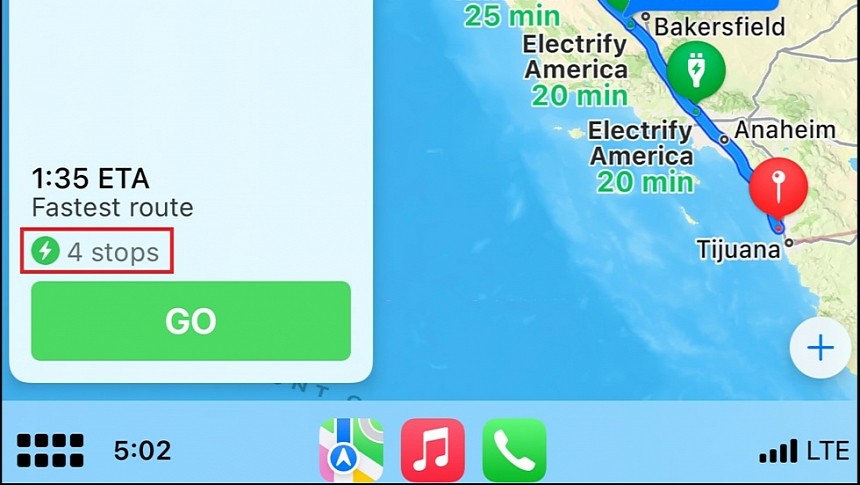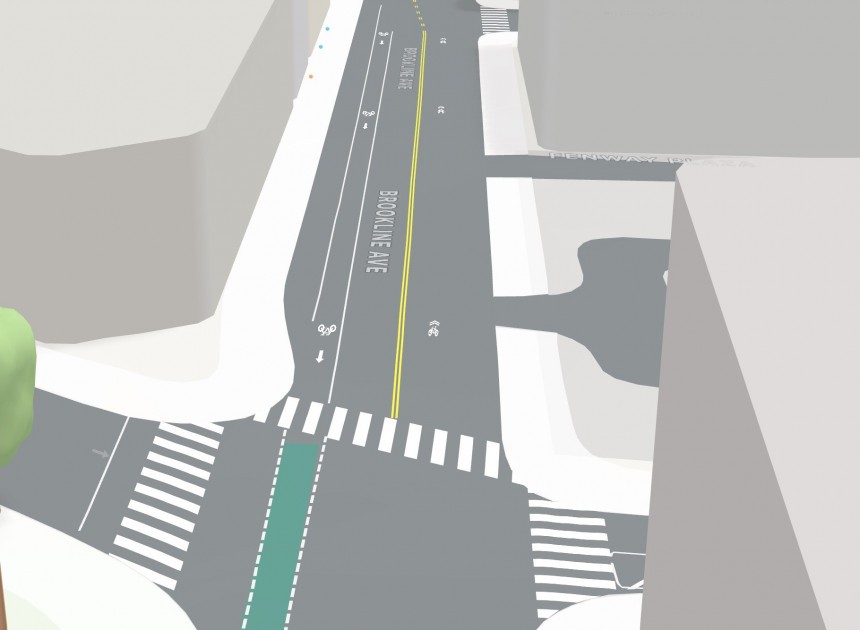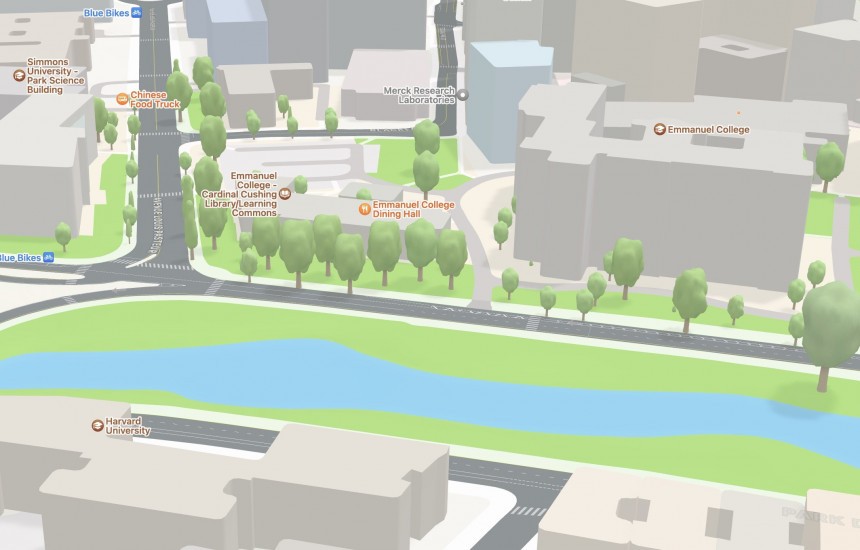Electric vehicles are already a thing in the automotive market, and Apple wants its mapping service to be part of this trend.
As a competitor to Google Maps, Apple Maps is also fitted with new-generation capabilities. An essential feature, also available in Google Maps on Android Automotive, is deep integration into EVs.
Apple Maps is a navigation app whose purpose is to find faster routes to the destination. In the last few years, it received new features that bring it closer to its rivals, including incident reporting a la Waze and a detailed city experience with new maps.
The 3D buildings and overhauled navigation are part of the refresh as well. Of course, there’s still room for improvement, especially as features like offline maps and satellite navigation are still missing.
Apple Maps is trying to be an essential figure in the always-evolving car industry with support for electric vehicle routing. To do this, the application comes with features that monitor the existing battery level and provides route guidance accordingly.
Originally supposed to debut in BMW and Ford models, the Apple Maps EV routing was a way to prove to the world Apple that wanted to be part of the evolving automotive industry.
Analysts believed this was solid proof Apple was developing its own car. The Apple Car, which is anticipated to launch as an electric vehicle as well, is expected to rely heavily on Apple Maps for smart capabilities. As such, this early EV integration was a preview of what Apple would eventually accomplish with an in-house developed car.
Apple Maps EV routing debuted on the Ford Mustang Mach-E last year.
When it’s running in an EV where this integration is available, Apple Maps tracks the battery charge to determine how far it can go. Then, based on the destination provided by the driver, Apple Maps performs an analysis to calculate if the battery charge is enough to reach the address.
To do this, the application takes into account more than the typical fastest route. Additional factors are computed, such as elevation changes along the route.
If Apple Maps determines that the vehicle doesn’t have enough juice to reach an address, it looks for charging stations along the route. The same thing happens when you drive, and the battery level gets too low. Apple Maps is constantly monitoring the charge and looks for nearby charging stations to make sure you are able to reach the destination.
Needless to say, Apple Maps has a large database that includes the location of EV charging stations. Unfortunately, the focus is once again on the United States, so if you live in Europe, some charging stations might be missing.
To get EV routing, you must connect your iPhone to the vehicle and launch CarPlay. The integration is powered by Apple’s car experience, as Apple Maps must be able to communicate with the ECU and read battery data.
However, Apple also allows carmakers to integrate the functionality into their own apps. As such, Apple Maps can become the underlying technology that powers EV routing in a third-party app.
The new CarPlay will expand to all screens in the car, so the Apple Maps information will be deeper integrated into the vehicle. It will also show routing guidance on the instrument cluster in all vehicles where the new CarPlay is available.
Eventually, EV routing will be a key feature of the Apple Car. Expected to launch in 2025 (at the earliest), the vehicle will rely heavily on technologies and services developed by Apple.
The company’s initial goal was to build a self-driving vehicle, but the autonomous capabilities would be limited at first. Eventually, the Apple Car is still set to become a fully autonomous vehicle, with Apple Maps therefore being in charge of everything.
Apple is investing aggressively in the expansion of Apple Maps on multiple fronts, especially as it’s turning services into a more important source of revenue. On the other hand, the company’s rollout of the overhauled Maps is still progressing slowly. Many large markets are yet to get the new data even several years after the official announcement.
The incident reporting feature, which was meant to turn Apple Maps into a Waze rival, is yet to gain traction. Essential capabilities, such as offline maps, are still missing, and Apple has so far remained tight-lipped on whether it plans to add them in future updates. Satellite navigation is not available either, despite satellite maps already bundled with the app.
Apple Maps is a navigation app whose purpose is to find faster routes to the destination. In the last few years, it received new features that bring it closer to its rivals, including incident reporting a la Waze and a detailed city experience with new maps.
The 3D buildings and overhauled navigation are part of the refresh as well. Of course, there’s still room for improvement, especially as features like offline maps and satellite navigation are still missing.
Apple Maps is trying to be an essential figure in the always-evolving car industry with support for electric vehicle routing. To do this, the application comes with features that monitor the existing battery level and provides route guidance accordingly.
Apple Maps in an EV
The iPhone maker first announced EV routing at WWDC back in 2020, but the company needed almost two years to make it happen.Originally supposed to debut in BMW and Ford models, the Apple Maps EV routing was a way to prove to the world Apple that wanted to be part of the evolving automotive industry.
Analysts believed this was solid proof Apple was developing its own car. The Apple Car, which is anticipated to launch as an electric vehicle as well, is expected to rely heavily on Apple Maps for smart capabilities. As such, this early EV integration was a preview of what Apple would eventually accomplish with an in-house developed car.
Apple Maps EV routing debuted on the Ford Mustang Mach-E last year.
When it’s running in an EV where this integration is available, Apple Maps tracks the battery charge to determine how far it can go. Then, based on the destination provided by the driver, Apple Maps performs an analysis to calculate if the battery charge is enough to reach the address.
If Apple Maps determines that the vehicle doesn’t have enough juice to reach an address, it looks for charging stations along the route. The same thing happens when you drive, and the battery level gets too low. Apple Maps is constantly monitoring the charge and looks for nearby charging stations to make sure you are able to reach the destination.
Needless to say, Apple Maps has a large database that includes the location of EV charging stations. Unfortunately, the focus is once again on the United States, so if you live in Europe, some charging stations might be missing.
To get EV routing, you must connect your iPhone to the vehicle and launch CarPlay. The integration is powered by Apple’s car experience, as Apple Maps must be able to communicate with the ECU and read battery data.
However, Apple also allows carmakers to integrate the functionality into their own apps. As such, Apple Maps can become the underlying technology that powers EV routing in a third-party app.
Apple’s long-term plan
EV routing is just a small part of Apple’s automotive ambitions. With the next-generation CarPlay, which is projected to launch later this year, Apple Maps will play an even more important role in the driving experience.The new CarPlay will expand to all screens in the car, so the Apple Maps information will be deeper integrated into the vehicle. It will also show routing guidance on the instrument cluster in all vehicles where the new CarPlay is available.
The company’s initial goal was to build a self-driving vehicle, but the autonomous capabilities would be limited at first. Eventually, the Apple Car is still set to become a fully autonomous vehicle, with Apple Maps therefore being in charge of everything.
Apple is investing aggressively in the expansion of Apple Maps on multiple fronts, especially as it’s turning services into a more important source of revenue. On the other hand, the company’s rollout of the overhauled Maps is still progressing slowly. Many large markets are yet to get the new data even several years after the official announcement.
The incident reporting feature, which was meant to turn Apple Maps into a Waze rival, is yet to gain traction. Essential capabilities, such as offline maps, are still missing, and Apple has so far remained tight-lipped on whether it plans to add them in future updates. Satellite navigation is not available either, despite satellite maps already bundled with the app.








